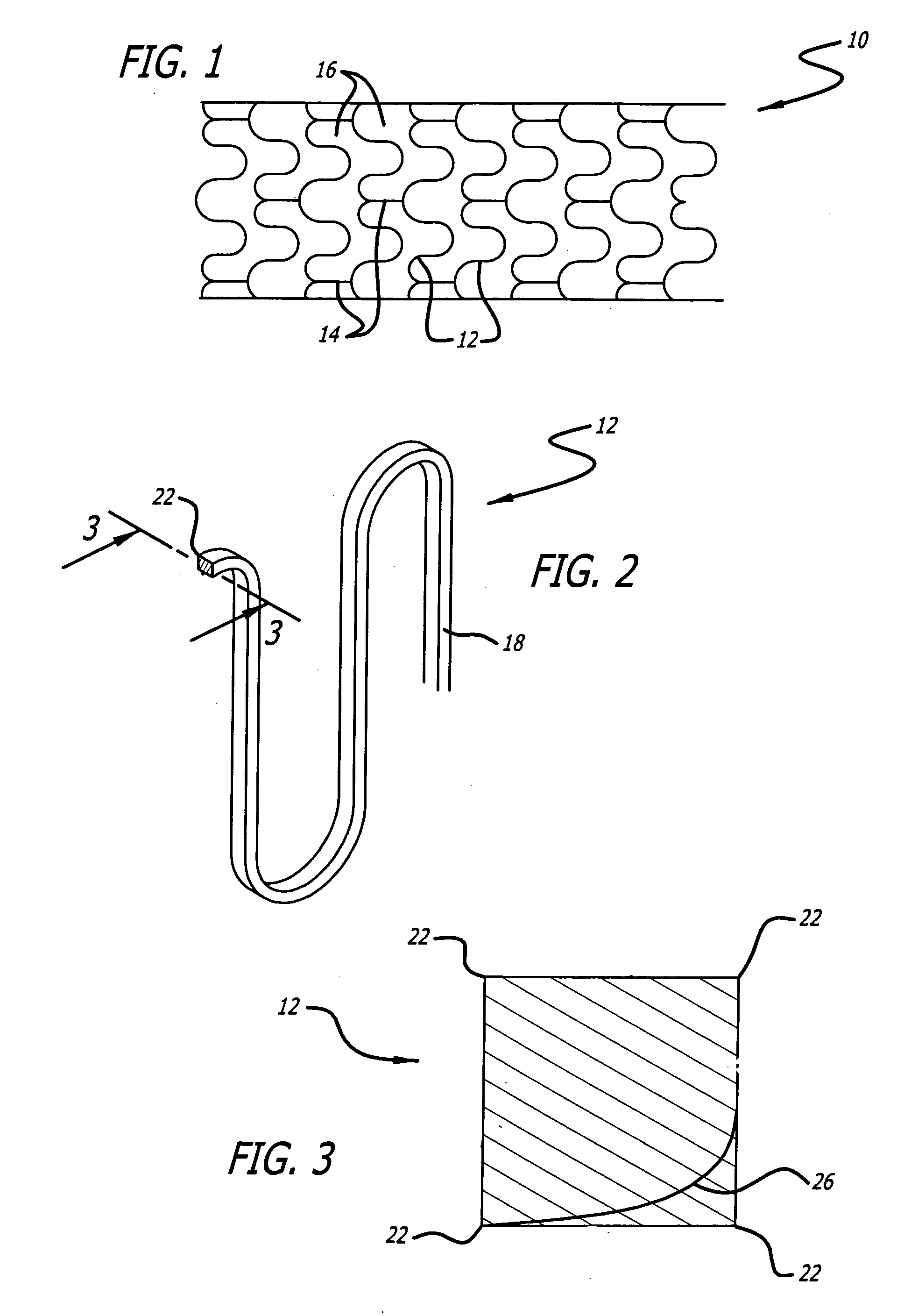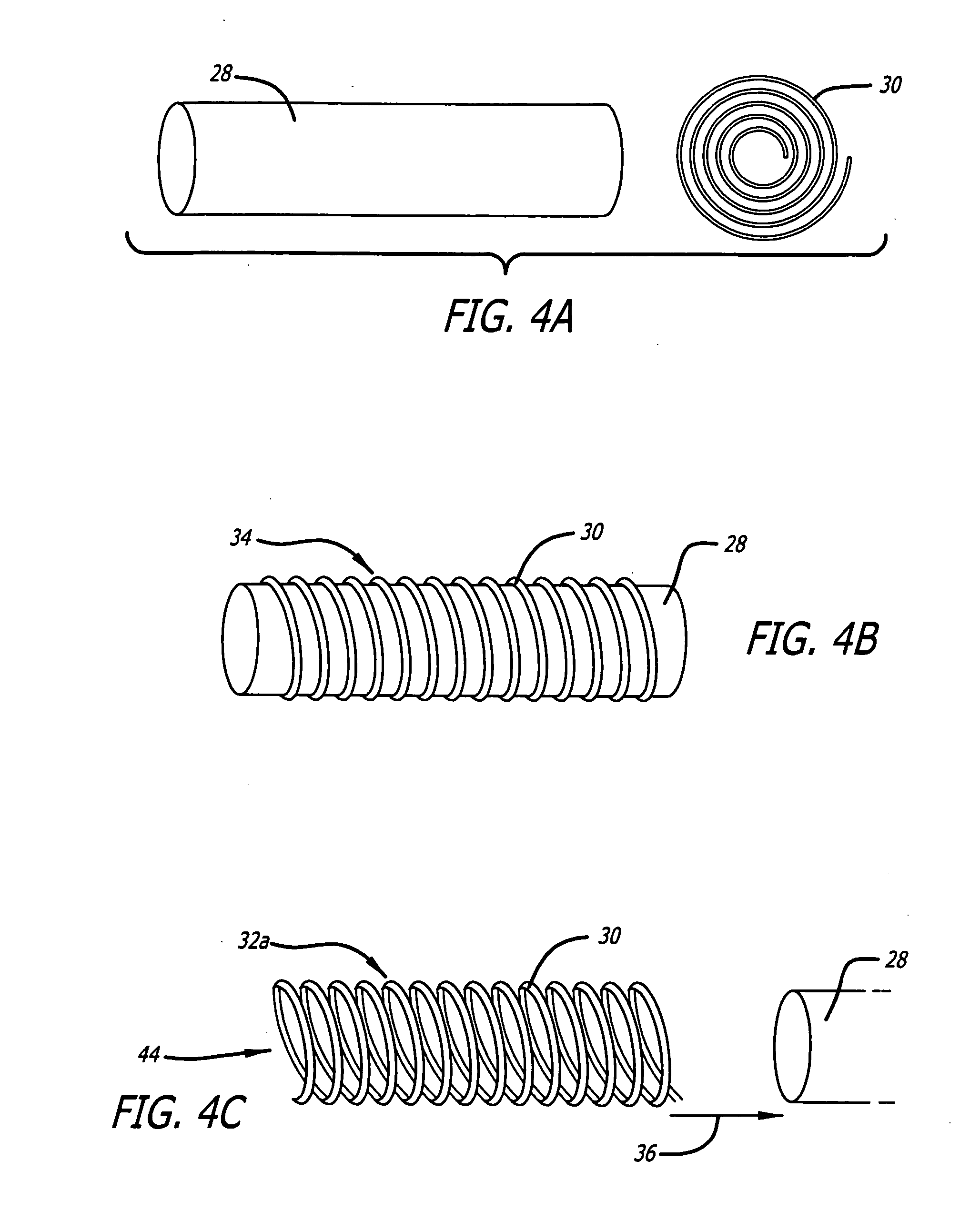Polymeric stent polishing method and apparatus
a technology of polymer stents and polishing methods, applied in auxillary shaping apparatuses, other domestic objects, manufacturing tools, etc., can solve the problem of minimizing residual solvents, and achieve the effect of reducing the stress concentration on the angle of struts
- Summary
- Abstract
- Description
- Claims
- Application Information
AI Technical Summary
Benefits of technology
Problems solved by technology
Method used
Image
Examples
Embodiment Construction
[0046]FIG. 1 illustrates a stent 10, which may be metal or polymeric, preferably polymeric. In either form, the stent 10 can includes a multitude of struts 12 and connecting elements 14, with interstitial spaces 16 located therebetween. Additionally, with respect to a stent constructed from polymer material, the stent 10 may be manufactured by a variety methods, including but not limited to: (a) laser-cutting a flat polymeric sheet in the form of rings and links, and then subsequently rolling the pattern into the shape of the cylindrical stent and providing a longitudinal weld to form the stent; (b) chemically etching a flat polymeric sheet and then subsequently rolling and welding to form the polymeric stent; (c) coiling a polymeric wire to form a polymeric stent, and (d) laser-cutting a pattern of cylindrical rings and connecting rings onto the tube itself. See, e.g., U.S. Pat. No. 6,585,755 to Jackson et al. It has been found, however, that polymeric stents manufactured by conven...
PUM
| Property | Measurement | Unit |
|---|---|---|
| temperature | aaaaa | aaaaa |
| length | aaaaa | aaaaa |
| inner diameter | aaaaa | aaaaa |
Abstract
Description
Claims
Application Information
 Login to View More
Login to View More - R&D
- Intellectual Property
- Life Sciences
- Materials
- Tech Scout
- Unparalleled Data Quality
- Higher Quality Content
- 60% Fewer Hallucinations
Browse by: Latest US Patents, China's latest patents, Technical Efficacy Thesaurus, Application Domain, Technology Topic, Popular Technical Reports.
© 2025 PatSnap. All rights reserved.Legal|Privacy policy|Modern Slavery Act Transparency Statement|Sitemap|About US| Contact US: help@patsnap.com



